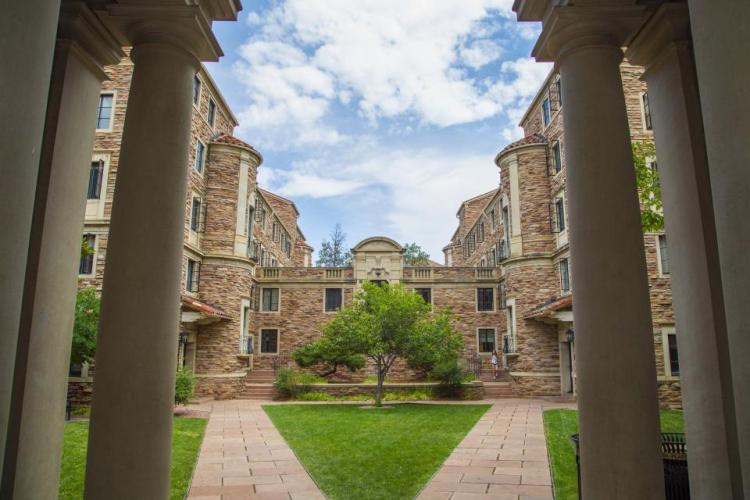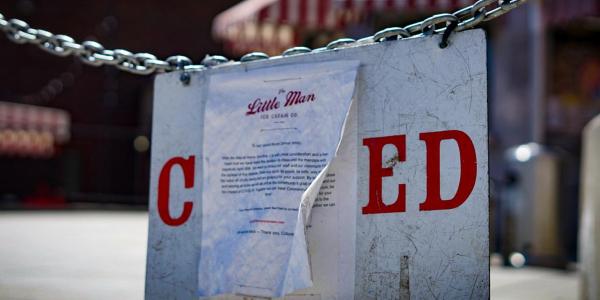Residential Academic Program will cater to students who want not only to learn how to learn but also to learn how to teach
When Plato and his pals first gathered at what became known as the Academy, very little had been established in terms of a formal doctrine, but the would-be philosophers apparently shared an interest in learning how to learn and got there by problem-solving together.
That’s essentially the idea behind Residential Academic Programs, or RAPs, programs hosted at residence halls and designed to get first-year students involved with other students and faculty with similar academic interests. For the first time next fall, the University of Colorado Boulder will host a RAP for students interested in not only learning how to learn, but learning how to teach, as well, as Sewall Hall will host the first RAP for would-be educators.
“We want to encourage that spirit of learning and growth, because the university is not a place to grow and learn on your own,” said math Professor Eric Stade, the director of Sewall RAP. While Stade’s specialty is in number theory and special functions, he has an avid interest in both math pedagogy and also in the role RAPs play in the lives of students.

Eric Stade
“Partly because I’m a teacher myself, I’m very keen on the idea of encouraging kids and giving them a picture of the profession and the discipline,” said Stade, who teaches a course in mathematics for elementary-school teachers as part of his duties as a math professor.
“I’ve worked with a lot of future teachers, elementary, high school and (higher education) teachers. I like the idea of highlighting the importance and benefits of teaching professions.”
Sewall RAP began in 1970, as the first RAP on campus. Traditionally, its emphases have been on history, culture, and the social sciences. These themes will continue to constitute major elements of Sewall’s academic identity, but will be now be integrated with the new focus on teaching and learning.

Sewell Hall, a residential academic program, is revamping its offerings to help students who want to learn how to teach.
Building on the success of Sewall RAP, the campus soon began expanding the RAP initiative: Farrand Hall got its humanities RAP in 1980, followed by Baker RAP, with emphases on natural and environmental science, in 1994. As of Fall 2017, the initiative will comprise 11 RAPs campus-wide, including programs in engineering, global studies, communications, business, the arts and so on.
Curiously, Stade was the director of Libby RAP, originally a performing and visual arts RAP, for a time. “It occurred to me that there is a lot of creativity in the mathematics that I do,” he said. With this, he undertook to expand Libby RAP’s focus, reimagining it as the “visual and performing arts and creativity” RAP.
To join a RAP, students must reside in the hall where it is housed. So RAP administrators work closely with Housing and Residence Life personnel to place freshmen in halls that fit their academic interests.
Appropriate placement is “a great benefit to the programs and students,” Stade said. “We’re optimistic going forward that students are going to be aligned more closely with their academic residence.”
Upon living in a RAP, freshmen will find core curriculum and elective courses taught in small and friendly classrooms in their own hall, as well as many other less-formal chances to interact with fellow students and faculty.
Traditionally, students anticipating a teaching career would complete an arts & sciences major, and then take additional coursework to earn their teaching credentials. However, this fall the School of Education will offer a major in elementary education, and the possibilities that this presents for Sewall RAP has Stade rather enthusiastic about the opportunities for collaboration.
“We’re very excited about this new theme in education,” he said. “Because it’s a broad theme, it allows students with a wide diversity of interests to participate.
“One thing I really hope to do is get students involved in volunteering at BVSD (Boulder Valley School District). I find those students are rewarded as much as the teachers they are helping.”
In the end, that’s the whole idea of a RAP, getting more involved.
“Going it alone in a large research institution can be quite intimidating for first-year students,” he said. “RAPs try to promote growth in a more organic and holistic way.”
And that’s a RAP.



